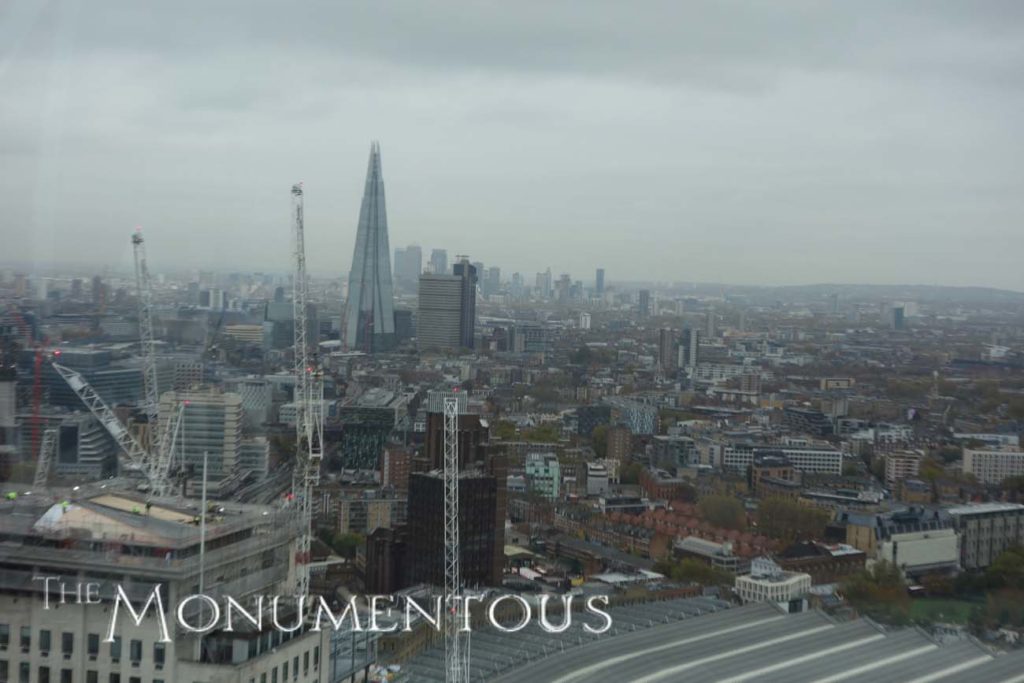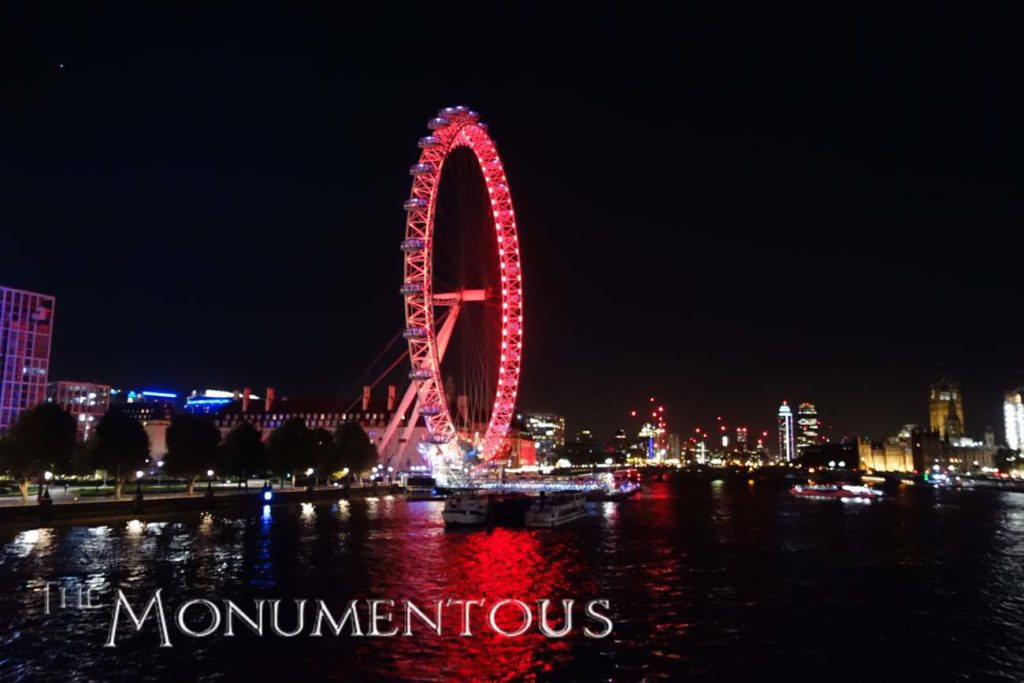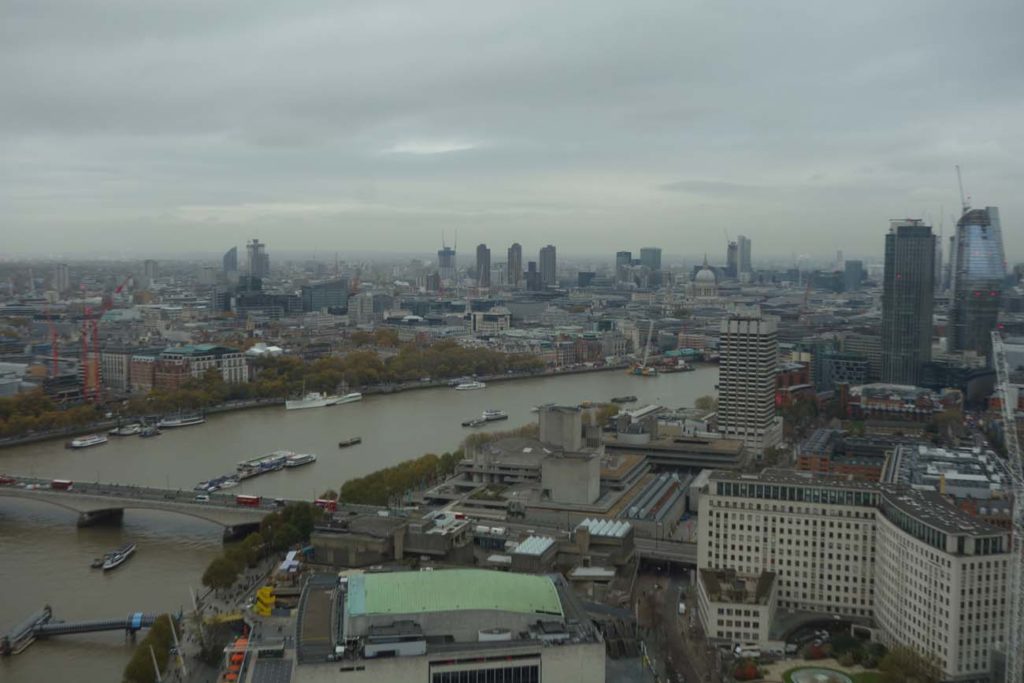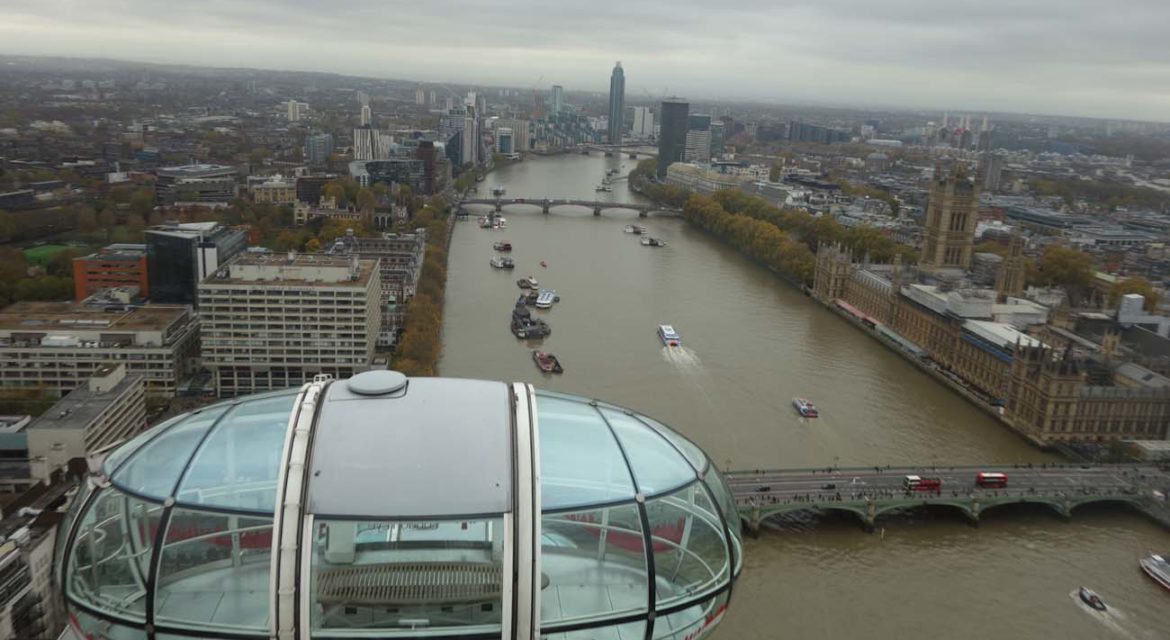 The original Ferris wheel was opened to the public in the late 1800s, but the concept of a wheel that spins in a circle with chairs attached to it has been around for centuries. This history combined with the fact that Ferris wheels have been a major draw at amusement parks for decades might make the concept seem worn out, but the London Eye has proven that there’s plenty of enthusiasm and interest for this kind of attraction.
The original Ferris wheel was opened to the public in the late 1800s, but the concept of a wheel that spins in a circle with chairs attached to it has been around for centuries. This history combined with the fact that Ferris wheels have been a major draw at amusement parks for decades might make the concept seem worn out, but the London Eye has proven that there’s plenty of enthusiasm and interest for this kind of attraction.
Originally intended as a temporary structure, the London Eye has showcased what it means to capture the hearts and minds of residents and tourists to create an enduring symbol of the city. This appeal has helped propel it to become the UK’s most popular paid visitor attraction and a fixture of the culture in London. It’s an appeal that’s been enabled on account of several factors though.

A New Landmark to Celebrate the Millennium
A 1993 competition put on by The Sunday Times and the Architecture Foundation asked the people of London to submit their ideas for a new landmark that would celebrate the millennium. In the end, no winner was declared, but the competition got Julia Barfield and David Marks of Marks Barfield Architects to think about what it would mean to create something that represented time turning, as well as the turn of the century. It was the beginning of what would become the London Eye.
 Funding for the project was a major challenge, and the group that ultimately supported the project had to sort through logistics such as obtaining planning and listed building consent while also changing some of the existing infrastructure on the South Bank of the River Thames. These challenges were eventually worked through and resolved, and the London Eye, originally known at the Millennium Wheel, was launched in 2000. It was assembled flat and moved onto eight temporary islands on the River Thames before being lifted into position.
Funding for the project was a major challenge, and the group that ultimately supported the project had to sort through logistics such as obtaining planning and listed building consent while also changing some of the existing infrastructure on the South Bank of the River Thames. These challenges were eventually worked through and resolved, and the London Eye, originally known at the Millennium Wheel, was launched in 2000. It was assembled flat and moved onto eight temporary islands on the River Thames before being lifted into position.
As the world’s “tallest cantilevered observation wheel”, the London Eye is distinct from more traditional Ferris wheels in that it is supported on only one side. This enables viewers to have an unobstructed view of some of the biggest attractions in London from a max height of 443 feet in the air. It features 32 sealed and air-conditioned oval-shaped passenger capsules that can carry up to 25 people. The number 32 represents the city’s 32 boroughs.
Originally, the London Eye was only supposed to stay up for five years. A vote by the Lambeth councilors in 2002 saw unanimous support for an extension that runs until 2025. Residents have commented on how they enjoy the “ultimate expression of the dominant high-tech aesthetic,” and many have gone on the record about how they envision it as a permanent London icon.
The extension the London Eye has received is a reflection of the impact it has enabled economically and culturally, but all of that stems from the experience associated with ascending 443 feet above London.

A New Way to Experience London
The oval-shaped capsules that eventually rotate 443 feet up and into the air allow viewers the freedom to move about and get a view of the city from every angle throughout the journey. It takes about 30 minutes to see the capsules rotate all the way around, during which time visitors will be able to see a variety of sights that are positioned throughout London, along with a totally unique view of the city itself.
 On the way up, it’s easy to spot attractions like The Shard and Saint Paul’s Cathedral, but the views of the Palace of Westminster are unmatched. Interactive screens also identify some of the attractions that aren’t as easy to spot, which include Buckingham Palace, Hyde Park, 10 Downing Street and the Ministry of Defense.
On the way up, it’s easy to spot attractions like The Shard and Saint Paul’s Cathedral, but the views of the Palace of Westminster are unmatched. Interactive screens also identify some of the attractions that aren’t as easy to spot, which include Buckingham Palace, Hyde Park, 10 Downing Street and the Ministry of Defense.
The experience in the London Eye itself isn’t the only thing that visitors can do at the site though, as other attractions like the 4D Cinema Experience provide additional options. There are also a variety of unique shops and restaurants that line the bank of the river. These stores offer everything from souvenirs to takeaway food to mulled wine.
While the variety of things to do at the London Eye provide visitors with additional options, nothing beats the sense of experiencing London in an entirely new way from such heights above the city. The fact that the view changes on the way up and on the way down can make it feel far quicker than a 30-minute trip.
The experience associated with towering above the city is unrivaled, and it’s part of the reason that so many different economic opportunities have been enabled at the attraction.

21st Century Revenue Opportunities
While the “London Eye” is the name that is most familiar, the attraction has had a number of different official names over the years, and the name continues to change to this day. These name changes and updates have created important branding and sponsorship opportunities.
The structure was officially renamed the British Airways London Eye when it was open to the first paying customers in March 2000, and it became the Merlin Entertainments London Eye in August 2009. In 2014, Coca-Cola signed an agreement to sponsor the London Eye, at which point the official name became Coca-Cola London Eye. Companies are able to take full advantage of these branding opportunities, which allow them to place advertisements in a number of different places and even have the lighting of the attraction line up with the brand color for the sponsors. These branding opportunities have proven to be quite lucrative, as a three-year sponsorship deal with a French-owned gas and electricity supplier was thought to be worth about £8 million.
The London Eye has numerous direct revenue opportunities as well, which start with the prices for tickets. These tickets can be purchased individually, but fast track tickets, VIP experiences and group prices are just a few of the options that visitors can choose from. All of them are priced differently and allow visitors to speed up, luxurify or customize their visit as they see fit.
 From the time visitors purchase their tickets all the way until they exit the capsules, revenue opportunities have been enacted. These include the photos taken before guests enter the capsules, photos taken in the capsules near the end of the trip and a gift shop that contains a variety of souvenirs. Even the displays that showcase the attractions for viewers have been turned into sponsorship opportunities.
From the time visitors purchase their tickets all the way until they exit the capsules, revenue opportunities have been enacted. These include the photos taken before guests enter the capsules, photos taken in the capsules near the end of the trip and a gift shop that contains a variety of souvenirs. Even the displays that showcase the attractions for viewers have been turned into sponsorship opportunities.
While the experience of being on the London Eye is the main attraction, other activities have been developed to ensure visitors have more to do. The London Eye 4D Cinema Experience is located inside the ticket office and is included for free with all London Eye tickets, which adds another dimension to the ride. These additional happenings at and around the Eye contribute to a 22% return factor.
The indirect revenue opportunities that have been enabled at the location are evident as well, since small stands have been erected up and down the South Bank. These stands rely on the traffic that comes to the London Eye, and their presence ensures that visitors don’t have to go to other parts of the city.
A number of 21st century revenue opportunities have been created for and around the London Eye, and they’re incredibly important for an attraction that has dealt with a 1500% rent demand increase. The ability to strive in the face of such challenges is part of why it has turned into an icon for the city in such a short amount of time.
Creating a New Sense of British Identity
 One of the major factors around seeing an attraction like the London Eye capture the hearts and minds of tourists and residents concerns the ability to interact with the attraction. The fact that it’s easy to spot the Eye from a variety of locations throughout the city have undoubtedly influenced how people have come to view it, and its’ proximity to famous landmarks like Big Ben and Westminster Abby are factors as well. It’s something that can be easily seen during the day, but at night it really stands out.
One of the major factors around seeing an attraction like the London Eye capture the hearts and minds of tourists and residents concerns the ability to interact with the attraction. The fact that it’s easy to spot the Eye from a variety of locations throughout the city have undoubtedly influenced how people have come to view it, and its’ proximity to famous landmarks like Big Ben and Westminster Abby are factors as well. It’s something that can be easily seen during the day, but at night it really stands out.
The access and views it provides for residents and tourists is unrivaled as well, since being able to ascend into the sky takes little more than waiting in line. Compare that to tickets that need to be booked 3-6 months in advance, or with attractions that don’t quite take visitors to such heights.
One of the subtlest aspects of the London Eye is the sense of fun that it engenders though, and that’s something visitors of all types see and respond to. British culture has a reputation for sometimes being stuffy and awkward, but none of that is evident here. Harkening back to the roots as an amusement park attraction, the London Eye has helped bring visitors and residents that much closer to the city, which has gone a long way toward influencing a new sense of British identity.
Because of that, the Eye has become a part of the culture in a very real way. It can be seen in everything from the opening of popular television shows to advertisements for condos and apartments. The London Eye is now seen of and spoken about in the same breath as attractions that have been around for centuries and even millennia. It’s proof of the power that monuments like the London Eye can establish and enable.
All of these factors have influenced the popularity of the London Eye, which have in turn made it the UK’s most popular attraction. However, the popularity of the London Eye goes beyond mere fame and has already transitioned into a legacy for the city and country.

21st Century Legacy
 The London Eye has become the UK’s top attraction because it’s able to function as something that’s both familiar and exciting for residents and tourists. There’s more to do and experience at the attraction than ascend the 443 feet to the top of the Eye, although nothing compares to the experience of doing so.
The London Eye has become the UK’s top attraction because it’s able to function as something that’s both familiar and exciting for residents and tourists. There’s more to do and experience at the attraction than ascend the 443 feet to the top of the Eye, although nothing compares to the experience of doing so.
That draw has and will continue to establish a legacy for the city that will change and evolve as the years go on, all while generating significant direct and indirect revenue. The London Eye can position itself amongst other icons in London, which is a powerful development in terms of seeing the legacy of the city extend into the 21st century and beyond.

